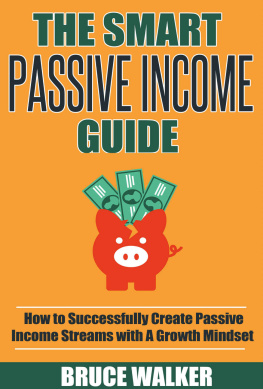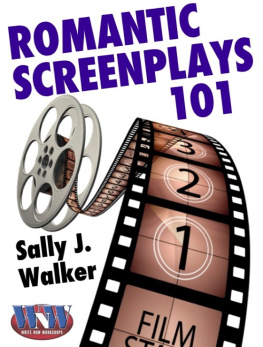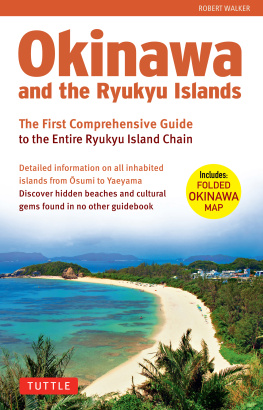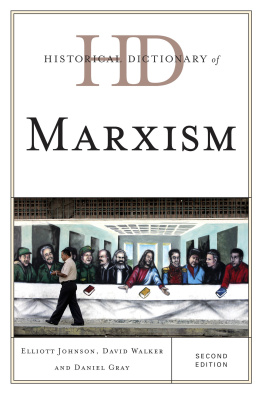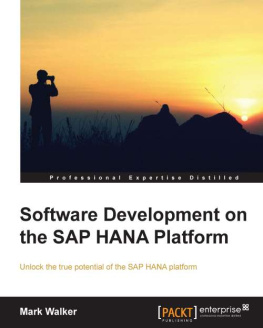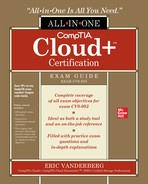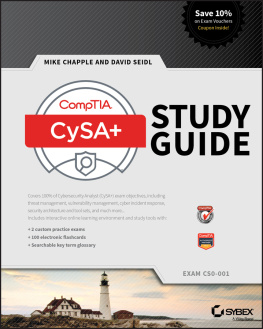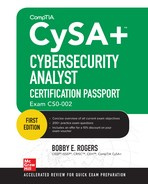
Copyright 2018 by McGraw-Hill Education. All rights reserved. Except as permitted under the United States Copyright Act of 1976, no part of this publication may be reproduced or distributed in any form or by any means, or stored in a database or retrieval system, without the prior written permission of the publisher, with the exception that the program listings may be entered, stored, and executed in a computer system, but they may not be reproduced for publication.
ISBN: 978-1-26-001180-7
MHID: 1-26-001180-1.
The material in this eBook also appears in the print version of this title: ISBN: 978-1-26-001178-4, MHID: 1-26-001178-X.
eBook conversion by codeMantra
Version 1.0
All trademarks are trademarks of their respective owners. Rather than put a trademark symbol after every occurrence of a trademarked name, we use names in an editorial fashion only, and to the benefit of the trademark owner, with no intention of infringement of the trademark. Where such designations appear in this book, they have been printed with initial caps.
McGraw-Hill Education eBooks are available at special quantity discounts to use as premiums and sales promotions or for use in corporate training programs. To contact a representative, please visit the Contact Us page at www.mhprofessional.com.
Information has been obtained by McGraw-Hill Education from sources believed to be reliable. However, because of the possibility of human or mechanical error by our sources, McGraw-Hill Education, or others, McGraw-Hill Education does not guarantee the accuracy, adequacy, or completeness of any information and is not responsible for any errors or omissions or the results obtained from the use of such information.
TERMS OF USE
This is a copyrighted work and McGraw-Hill Education and its licensors reserve all rights in and to the work. Use of this work is subject to these terms. Except as permitted under the Copyright Act of 1976 and the right to store and retrieve one copy of the work, you may not decompile, disassemble, reverse engineer, reproduce, modify, create derivative works based upon, transmit, distribute, disseminate, sell, publish or sublicense the work or any part of it without McGraw-Hill Educations prior consent. You may use the work for your own noncommercial and personal use; any other use of the work is strictly prohibited. Your right to use the work may be terminated if you fail to comply with these terms.
THE WORK IS PROVIDED AS IS. McGRAW-HILL EDUCATION AND ITS LICENSORS MAKE NO GUARANTEES OR WARRANTIES AS TO THE ACCURACY, ADEQUACY OR COMPLETENESS OF OR RESULTS TO BE OBTAINED FROM USING THE WORK, INCLUDING ANY INFORMATION THAT CAN BE ACCESSED THROUGH THE WORK VIA HYPERLINK OR OTHERWISE, AND EXPRESSLY DISCLAIM ANY WARRANTY, EXPRESS OR IMPLIED, INCLUDING BUT NOT LIMITED TO IMPLIED WARRANTIES OF MERCHANTABILITY OR FITNESS FOR A PARTICULAR PURPOSE. McGraw-Hill Education and its licensors do not warrant or guarantee that the functions contained in the work will meet your requirements or that its operation will be uninterrupted or error free. Neither McGraw-Hill Education nor its licensors shall be liable to you or anyone else for any inaccuracy, error or omission, regardless of cause, in the work or for any damages resulting therefrom. McGraw-Hill Education has no responsibility for the content of any information accessed through the work. Under no circumstances shall McGraw-Hill Education and/or its licensors be liable for any indirect, incidental, special, punitive, consequential or similar damages that result from the use of or inability to use the work, even if any of them has been advised of the possibility of such damages. This limitation of liability shall apply to any claim or cause whatsoever whether such claim or cause arises in contract, tort or otherwise.
Fernando J. Maym, Ph.D., CISSP, CSA+, is experienced in the research, development, and dissemination of innovative technical solutions, and currently leads Soar Technologys efforts in researching and commercializing cyberspace operations products. Prior to joining the company, Dr. Maym was the deputy director of the Army Cyber Institute (ACI), a government think tank he helped create for the Secretary of the Army in order to solve future cyberspace operations problems affecting the whole country. While at the ACI, he led significant public-private partnerships involving government, industry, and academia, including the first NYC-wide cyber exercise, which involved 35 major organizations and hundreds of participants. He has served as advisor to congressional leaders, corporate executives, and foreign governments on cyberspace issues. Dr. Maym taught computer science and cybersecurity at the U.S. Military Academy at West Point for 12 years. He retired from the Army as a lieutenant colonel and is a senior member of the Institute of Electrical and Electronics Engineers. He holds three patents and is the recipient of the Armys Research and Development Achievement Award. Dr. Maym has written extensively and is the co-author of the seventh edition of the bestselling CISSP All-in-One Exam Guide.
Brent Chapman, GCIH, GCFA, CISSP, CSA+, is a cyber operations officer in the United States Army, currently assigned as a project manager at the Secretary of Defenses Defense Innovation Unit Experiment (DIUx) in Silicon Valley. In this role, he works to accelerate the procurement of commercially derived disruptive capabilities to maintain global peace and improve U.S. national security. Prior to DIUx, Brent was researcher at the Army Cyber Institute (ACI), exploring emerging information security and cyber warfare issues with a focus on field-expedient solutions and countermeasures. While at West Point, Brent also served as an instructor in the Department of Electrical Engineering and Computer Science. He is a professional member of the Association of Computing Machinery, FCC Amateur Radio license holder, and contributor to several technical and maker-themed publications.
About the Technical Editor
Bobby E. Rogers is an information security engineer working as a contractor for Department of Defense agencies, helping to secure, certify, and accredit their information systems. His duties include information system security engineering, risk management, and certification and accreditation efforts. He retired after 21 years in the U.S. Air Force, serving as a network security engineer and instructor, and has secured networks all over the world. Bobby has a masters degree in information assurance (IA) and is pursuing a doctoral degree in cybersecurity from Capitol Technology University in Maryland. His many certifications include CISSP-ISSEP, CEH, and MCSE: Security, as well as the CompTIA A+, Network+, Security+, and Mobility+ certifications.

Becoming a CompTIA Certified IT Professional Is Easy
Its also the best way to reach greater professional opportunities and rewards.
Why Get CompTIA Certified?
Growing Demand
Labor estimates predict some technology fields will experience growth of more than 20% by the year 2020. (Source: CompTIA 9th Annual Information Security Trends study: 500 U.S. IT and Business Executives Responsible for Security.) CompTIA certification qualifies the skills required to join this workforce.
Higher Salaries
IT professionals with certifications on their resume command better jobs, earn higher salaries, and have more doors open to new multi-industry opportunities.
Next page

